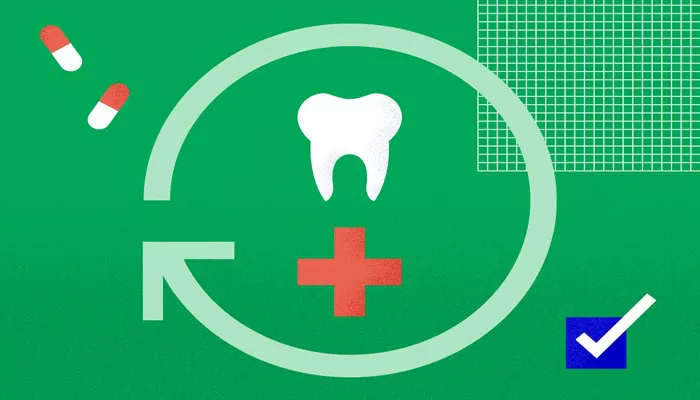Dental health is a crucial aspect of overall well-being. Maintaining a healthy smile requires regular check-ups, cleanings, and sometimes treatments for more serious conditions. However, dental care can be expensive, which is why many people opt for dental insurance. Understanding the waiting periods associated with dental insurance is essential for anyone looking to secure coverage. This article explores how long you may need to wait to access dental insurance benefits, including details on common waiting periods, types of coverage, and factors that influence these timelines.
What Is Dental Insurance?
Dental insurance is a type of health insurance designed to pay a portion of the costs associated with dental care. This can include routine check-ups, cleanings, fillings, extractions, and more advanced procedures such as crowns and root canals.
Dental insurance can help reduce out-of-pocket expenses, making dental care more accessible.
Most dental insurance plans fall into two categories:
Preventive Care: This includes regular check-ups, cleanings, and X-rays, typically covered at a higher percentage with no waiting period.
Major Procedures: This includes more complex treatments like crowns, bridges, or surgeries. These often have waiting periods.
Understanding Waiting Periods
When enrolling in a dental insurance plan, you may encounter waiting periods. A waiting period is the time you must wait before you can access certain benefits under your plan. Waiting periods can vary significantly depending on the type of procedure and the specific insurance provider.
Common Waiting Periods
No Waiting Period: Preventive services usually have no waiting period. You can schedule your routine check-ups and cleanings as soon as your coverage starts. These services typically include:
- Dental exams
- Cleanings
- X-rays
Short Waiting Periods (6 months): Many plans impose a six-month waiting period for basic restorative services. These services include:
- Fillings
- Simple extractions
- Sealants
Longer Waiting Periods (12 months or more): Major dental services often come with longer waiting periods, usually ranging from 12 months to 24 months. This can include:
- Crowns
- Bridges
- Root canals
- Orthodontics (braces)
Specific Waiting Periods by Service Type
| Service Type | Typical Waiting Period |
| Preventive Care | No Waiting Period |
| Basic Restorative Care | 6 Months |
| Major Restorative Care | 12 Months |
| Orthodontics | 12-24 Months |
Factors Affecting Waiting Periods
Several factors can influence the waiting periods associated with dental insurance:
Insurance Provider: Different insurance companies have varying policies regarding waiting periods. It’s crucial to read the fine print of each plan before enrolling.
Plan Type: Some plans may offer shorter waiting periods for an additional premium. For example, a dental discount plan might have no waiting periods but may have higher fees for services.
State Regulations: Certain states have laws regulating waiting periods for dental insurance. These laws can impact how long you may have to wait for coverage.
Previous Coverage: If you had dental insurance with another provider, some insurers may waive waiting periods if you can provide proof of prior coverage.
Importance of Understanding Waiting Periods
Understanding the waiting periods for dental insurance is crucial for several reasons:
Financial Planning: Knowing when you can access benefits allows for better budgeting. If you anticipate needing dental work soon, it’s vital to select a plan with shorter waiting periods or consider immediate coverage options.
Dental Care Access: Knowing when you can receive specific treatments helps in scheduling necessary appointments. For instance, if you need orthodontic treatment, a plan with a shorter waiting period will be more beneficial.
Comparison Shopping: When evaluating different insurance plans, being aware of the waiting periods can help you make informed decisions. You might find a plan that offers comprehensive coverage with minimal waiting time.
Tips for Managing Waiting Periods
While waiting periods can be frustrating, there are ways to manage your dental health during this time:
Prioritize Preventive Care: Take advantage of the no-waiting-period preventive services. Schedule regular check-ups and cleanings to maintain oral health.
Consider Temporary Solutions: If you require immediate treatment, look into temporary dental solutions while waiting for your insurance to kick in. This could include seeking care from clinics that offer payment plans or dental schools that provide services at reduced rates.
Keep Good Dental Hygiene: Practice excellent dental hygiene at home. Regular brushing, flossing, and using mouthwash can help prevent dental issues that might require extensive treatment.
Consult with Your Dentist: Discuss your insurance situation with your dentist. They may provide insights or suggest alternative treatments that align with your coverage.
Conclusion
Dental insurance can significantly reduce the financial burden of dental care, but understanding waiting periods is essential for effectively utilizing your coverage. Waiting periods can vary based on the type of service, provider policies, and state regulations. By familiarizing yourself with these timelines and considering the factors involved, you can make informed decisions about your dental health.
When selecting a dental insurance plan, assess your individual needs, coverage options, and the specifics of waiting periods. Prioritize preventive care during any waiting period, and stay proactive in managing your dental health.
Related topics:

